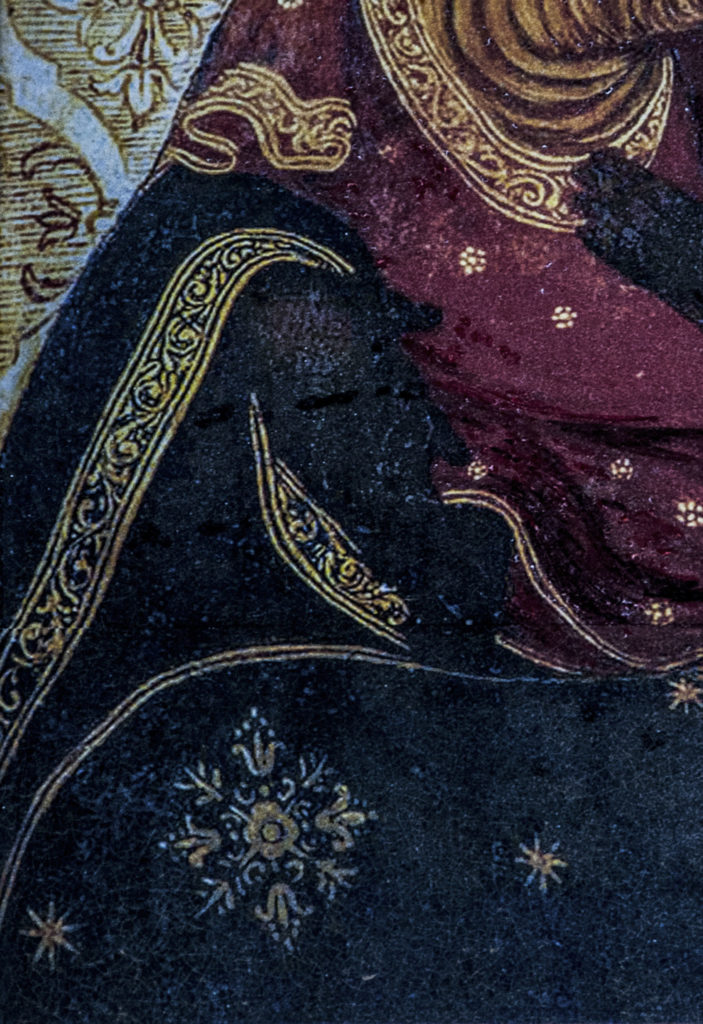 Rusedda is the dialectal name of the fragrant cistus salvifolius plant, which was once used and much sought after by ceramists to burn in their kilns.
Rusedda is the dialectal name of the fragrant cistus salvifolius plant, which was once used and much sought after by ceramists to burn in their kilns.
The cistus plants were gathered from the nearby San Pietro forest and carried by pack animals to the Conadomini church during the celebrations of the Madonna
During the celebrations of the Madonna dei Conadomini the procession is accompanied by the sombre sound of brogne, large seashells used as musical instruments.
The strong contrast between the explosion of colour in the decorated floats and infiorata of the Staircase and the sombre sound of these natural instruments enhances the solemnity of the moment on the route to the Mother Church.
 It is impossible not to be struck by the intensity of the colours that resonate within this work. From the wooden panel’s golden damask background, typical of the period, to the shadows around the sacred faces, not to mention the tender contact of the cheeks of the mother and her son.
It is impossible not to be struck by the intensity of the colours that resonate within this work. From the wooden panel’s golden damask background, typical of the period, to the shadows around the sacred faces, not to mention the tender contact of the cheeks of the mother and her son.
If we focus on Mary’s blue starry cloak, a symbol of humanity and virginity, we cannot tear our gaze away from her extraordinarily large and dark hands, a symbol of strength and industriousness, or from Jesus’ red cloak, a symbol of divinity, with the recurring theme of the six-petal rosette.